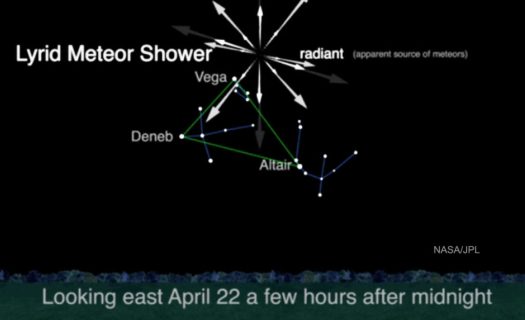
One of my favorite free websites is NASA’s Astronomy Picture of the Day (APOD). Every morning I begin my day by looking at what new image is on that site. Since there is an explanation of the image, this is also an opportunity to learn about objects in space and how those objects might fit into our understanding of the universe. The picture from April 17, 2018, is called “M57: The Ring Nebula.”
M57 is known as a “planetary nebula,” but the glowing material does not come from planets. Scientists believe it is the outer layers expelled by a star very similar to our Sun. It went through a process that we see happening in space where stars explode and seed space with heavy elements produced by the explosion. What is left of the star is the tiny dot at the center of the nebula. That dot is a very dense remnant of the core of the star that is spinning very rapidly obeying the laws of physics as it does so.
This is not creation. The material this explosion produced is not coming from nothing. It is the product of previous materials that were produced at the moment of creation by a process that we cannot duplicate or even adequately describe in scientific terms. The process of fusing hydrogen to heavier elements, seeding space with all of the material produced, and reforming the material to make terrestrial life possible is outside of our capacity to observe. To some extent, it can be described with mathematical equations. The astronomy picture of the day on the NASA site continues to detail the process that produced our world and all we see around us.
God is not limited by time or space or our capacity to understand. In Job 38:4 God challenges Job to deal with “the foundations of the Earth.” In Proverbs 8:22-27 wisdom speaks about the planning and design God made before the Earth came to be (verse 23). Wisdom speaks about the preparation of the heavens (verse 27).
When we look at the astronomy picture of the day on the NASA website, we are not seeing the present. We are looking into the past. M57 went through the process of seeding its neighborhood with heavy elements 2,000 years ago, and we witness that event today. Virtually everything on the NASA website, and in astronomy, is in the past. Seeing these things allows us to wonder at the power, wisdom, and majesty of God. It reinforces David’s statement in Psalms 8:3-4: “When I consider your heavens, the work of your fingers, the moon and stars which you have ordained, what is man that you are mindful of him and the son of man that you visit him?”
–John N. Clayton © 2018









